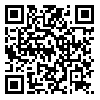BibTeX | RIS | EndNote | Medlars | ProCite | Reference Manager | RefWorks
Send citation to:
URL: http://jdisabilstud.org/article-1-3552-fa.html

 ، مسعود قاسمی*2
، مسعود قاسمی*2 
 ، مهدیه صالحی2
، مهدیه صالحی2 

2- استادیار گروه روانشناسی، دانشکدهٔ روانشناسی و علوم تربیتی دانشگاه آزاد اسلامی واحد تهران مرکزی، تهران، ایران
چکیده
زمینه و هدف: کارکردهای اجرایی در دانشآموزان با اختلال یادگیری خاص نقش کلیدی در عملکرد تحصیلی آنها ایفا میکند؛ بنابراین، پژوهش حاضر باهدف مقایسهٔ اثربخشی مداخلات مبتنیبر آگاهی واجشناختی و نیمانیکس بر حافظهٔ فعال و کارکردهای اجرایی دانشآموزان با اختلال یادگیری خاص انجام شد.
روشبررسی: روش پژوهش نیمهتجربی با طرح پیشآزمون و پسآزمون و پیگیری همراه با دو گروه آزمایش و یک گروه گواه بود. جامعهٔ آماری را تمامی دانشآموزان دارای اختلال یادگیری خاص شهر تهران تشکیل دادند که در سال ۱۴۰۲ به مراکز مشاوره و توانبخشی در شهر تهران مراجعه کردند. شصت نفر از افراد داوطلب واجد شرایط (۳۳ پسر و ۲۷ دختر) بهروش نمونهگیری هدفمند انتخاب شدند. سپس بهطور تصادفی بیست نفر در گروه آزمایش اول (مداخلهٔ مبتنیبر آگاهی واجشناختی) و بیست نفر در گروه آزمایش دوم (مداخله مبتنیبر آموزش نیمانیکس) و بیست نفر در گروه گواه قرار گرفتند؛ البته درحین اجرا گروه آزمایش اول، سه نفر و گروه آزمایش دوم، چهار نفر و گروه گواه چهار نفر ریزش داشت. ابزارهای گردآوری دادهها شامل مقیاس نقایص کارکردهای اجرایی کودکان و نوجوانان بارکلی (بارکلی، ۲۰۱۲) و مقیاس هوشآزمای تهران-استنفورد-بینه (افروز و کامکاری، ۱۳۸۵) بود. برای تحلیل دادهها از روشهای آماری تحلیل واریانس با اندازهگیری مکرر و آزمون تعقیبی بونفرونی در سطح معناداری ۰٫۰۵ در نرمافزارSPSS نسخهٔ ۲۳ استفاده شد.
یافتهها: نتایج نشان داد، بین گروههای آزمایش آموزش نیمانیکس و آموزش آگاهی واجشناختی با گروه گواه در متغیرهای حافظهٔ فعال و کارکردهای اجرایی تفاوت معناداری مشاهده شد (۰٫۰۵>p)؛ همچنین، بین گروههای آزمایش آموزش نیمانیکس و آموزش آگاهی واجشناختی باتوجهبه میانگین نمرات دو متغیر، در پسآزمون و پیگیری تفاوت معناداری وجود داشت (۰٫۰۵>p).
نتیجهگیری: آموزش نیمانیکس درمقایسه با آموزش آگاهی واجشناختی اثربخشتر است؛ بنابراین، آموزش نیمانیکس میتواند بهعنوان امری بهبوددهنده در افزایش حافظهٔ فعال و کارکردهای اجرایی دانشآموزان با اختلال یادگیری خاص استفاده شود.
| بازنشر اطلاعات | |
 |
این مقاله تحت شرایط Creative Commons Attribution-NonCommercial 4.0 International License قابل بازنشر است. |


